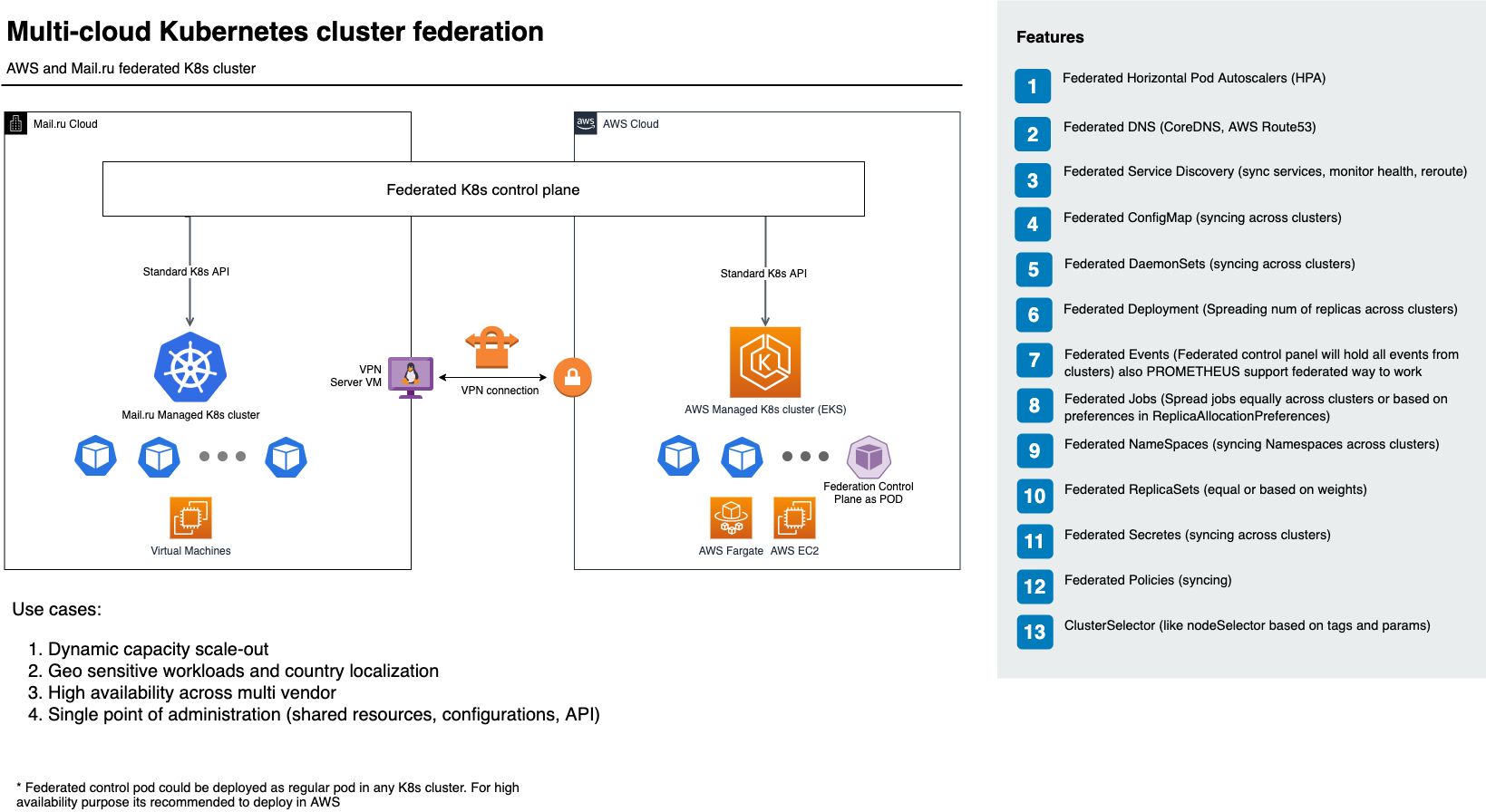==============
This project automates the deployment and configuration process of the demo stand. The main purpose of this deployment is to demonstrate the work of federation between two clusters: AWS EKS (Elastic Kubernetes Service) and Mail.ru Cloud Managed Kubernetes service through a secured VPN connection. Federation is done using the official Kubernetes kubefed project. We see these scenarios that could benifit from cluster federation but not limited to them:
- Dynamic scaling between clusters
- Helping to arrange Geo/Country sensitive workloads and hybrid architectures
- High availability between clusters/clouds
- Single point of administration for multiple clusters across regions or clouds
This image is intended for usage in interactive mode.
docker build -t aws-mcs-k8s-federation .docker run -it aws-mcs-k8s-federation /bin/bashOR
docker run -d aws-mcs-k8s-federation
docker exec -it <container ID> /bin/bashThis step may be skipped, if on host machine you have configured credentials in ~/.aws and during container run you've mounted them, e.g. -v $HOME/.aws:/root/.aws. Credentials are expected to be in /root/.aws. Otherwise, configure them during interactive mode:
aws configureAgain as in AWS, this step may be skipped, if a correct mount is provided during container run, e.g. -v $HOME/my-openrc.sh:/app/openrc. Credentials are expected to be in file /app/openrc. See help. It is highly recommended to have the password in there, instead of an interactive request, e.g. export OS_PASSWORD="mypass".
If you've already have running container, copy the file during interactive mode:
cat > /app/openrc
<PASTE YOUR OPENRC>
Ctrl+DMain script is super-big-script.sh.
./super-big-script.shAfter the script has finished, you'll have plenty of files needed for later work inside the container. To mitigate possibility of losing them, it is recommended to copy them somewhere outside the container.
- MCS Keypair with name
k8s-fed-XXXXwill be created. Private part will be stored in/var/tmp/k8s-fed_id_rsa. It should be used to access VPN server and Kubernetes nodes by SSH. - MCS KUBECONFIG with private IP will be stored in
/var/tmp/mcs_k8s_cfg. This is not so critical, because may be reacquired from MCS console or API. - AWS EKS KUBECONFIG updated to conform to
kubefedctltool. This is stored in/root/.kube/config. - AWS VPN configuration is stored in
/var/tmp/vpn_cfg_conn.xml.
In docker container execute this command:
kubectl -n kube-federation-system get kubefedclustersYou should see something like this in the output:
NAME READY AGE
awsfedcluster True 30s
mcs-cluster-42k4 True 24s